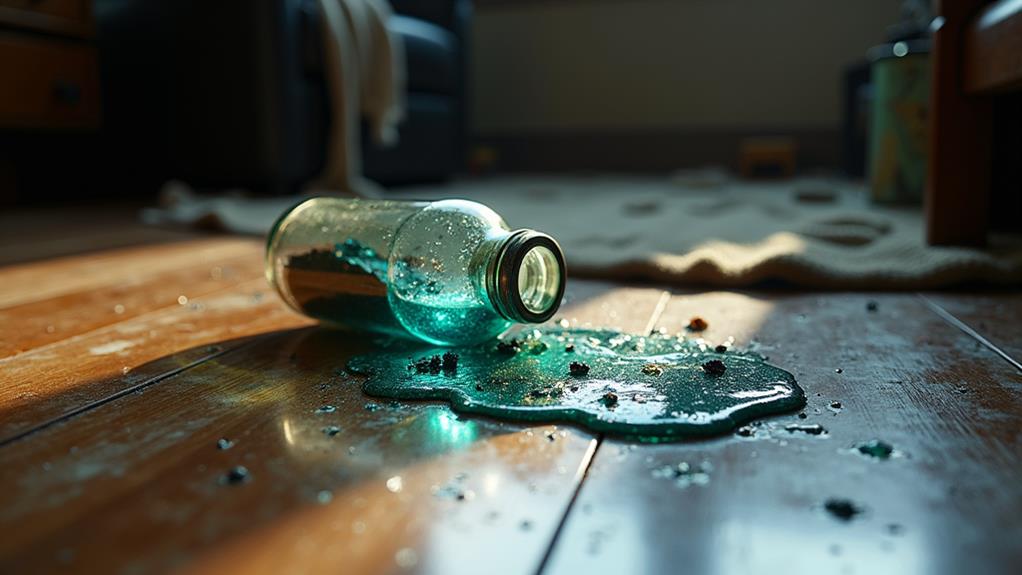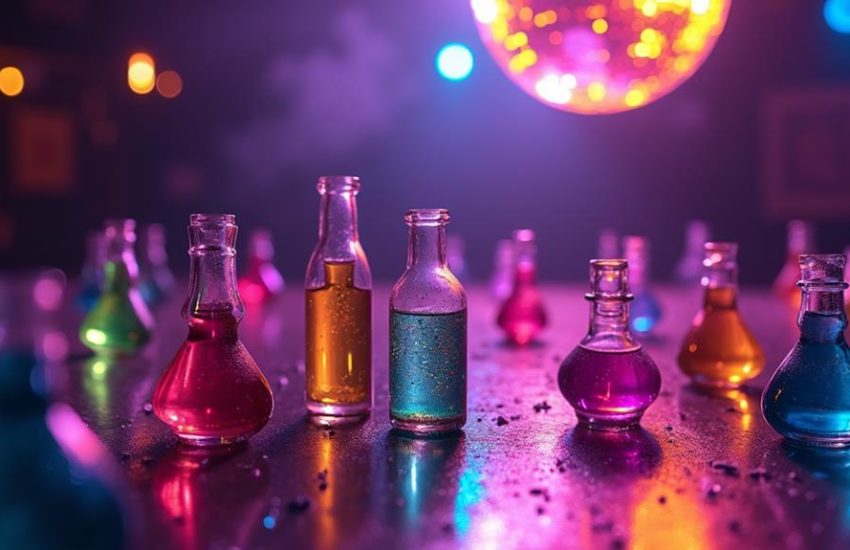Spilled Poppers Ruin More Than Just Your Buzz: The Costly Damage You Need to Know About
Poppers, volatile alkyl nitrite compounds, can cause extensive damage when spilled. These corrosive substances harm various surfaces, including wood furniture, carpets, and vinyl flooring. Long-term exposure leads to irreversible degradation of fabrics, leather, and plastics. Porous materials suffer structural weakening and hidden discoloration. Accidental exposure poses health risks, including respiratory irritation, skin burns, and potential eye damage. Immediate action is vital to minimize damage, requiring proper cleaning techniques and ventilation. Understanding the chemical composition and implementing prevention strategies are important for mitigating costly repercussions. Further exploration reveals the full extent of poppers' damaging potential and effective countermeasures.
Understanding Poppers' Chemical Composition
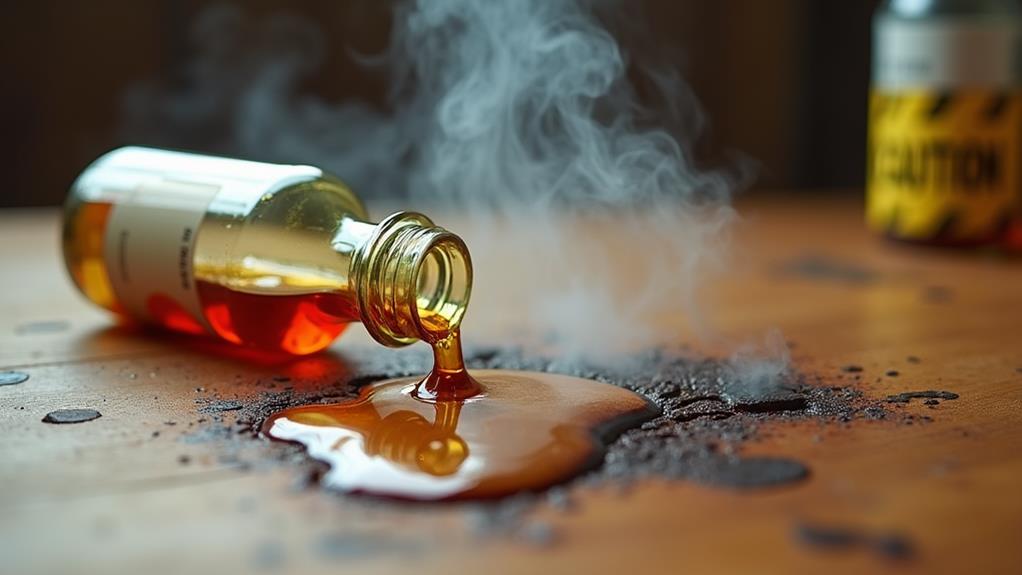
Understanding Poppers' Chemical Composition
The chemical composition of poppers primarily consists of alkyl nitrites, a class of volatile organic compounds. These substances are typically derived from amyl, butyl, or isobutyl alcohols through chemical reactions with nitrous acid.
The resulting products are highly flammable, clear to pale yellow liquids with a characteristic fruity odor. Users should be aware that the inhaled chemical is not the same as amyl nitrite used for Angina treatment.
The instability of alkyl nitrites makes them prone to degradation, which can lead to the formation of potentially harmful byproducts and increase the risk of damage to surfaces upon contact.
Common Surfaces Affected by Spills
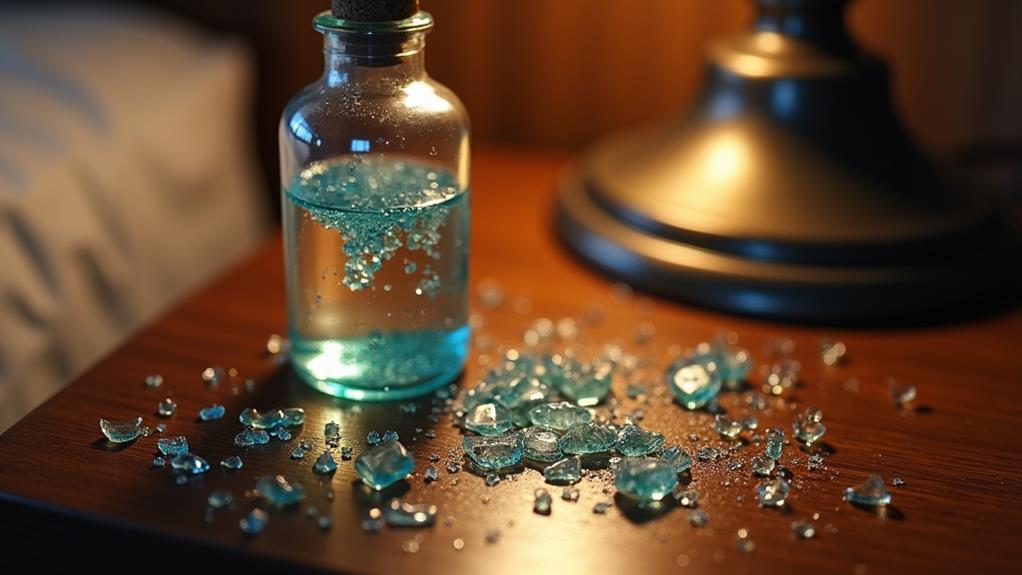
Given the volatile nature of alkyl nitrites, accidental spills can lead to significant damage on various surfaces commonly found in homes and recreational spaces.
The corrosive properties of poppers can affect multiple materials, causing discoloration, erosion, and permanent staining. Understanding which surfaces are most vulnerable can help users take preventive measures and react swiftly to spills.
Users should likewise be aware that low blood pressure from inhaling poppers may impair their ability to clean up spills swiftly, leading to further damage.
Common surfaces affected by popper spills include:
- Wood furniture finishes
- Synthetic and natural fiber carpets
- Vinyl and linoleum flooring types
- Painted walls and ceilings
These materials are particularly susceptible because of their porous nature or chemical reactivity with alkyl nitrites.
Immediate action is essential to minimize damage, as the longer the substance remains in contact with the surface, the more severe the effects.
Proper cleanup methods and timely professional intervention can mitigate long-term consequences and preserve the integrity of affected areas.
Long-Term Damage to Materials
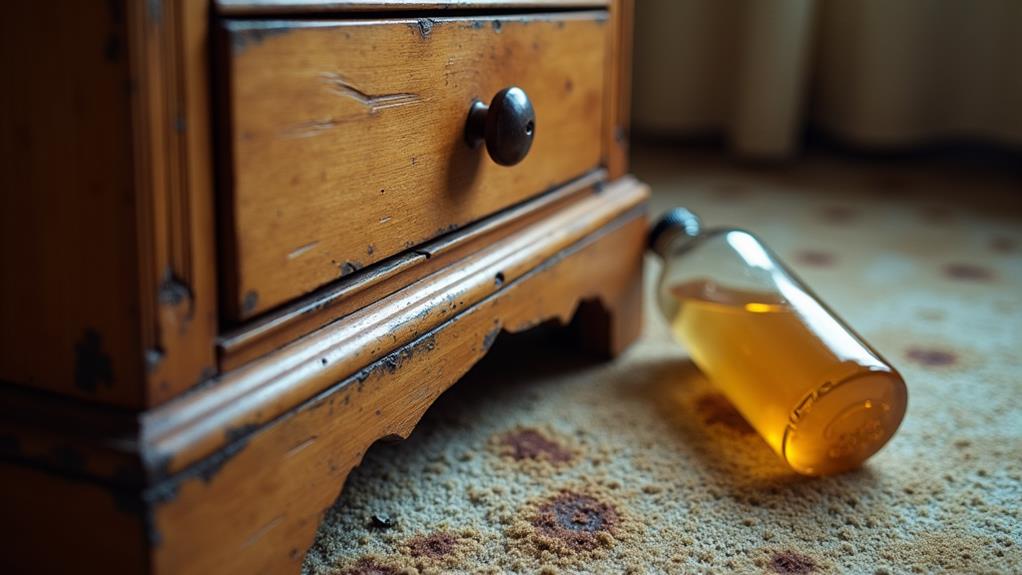
Long-term exposure to alkyl nitrites can result in severe and often irreversible damage to various materials. The corrosive nature of these chemicals leads to significant material degradation over time, particularly affecting fabrics, leather, and certain plastics.
Porous surfaces are especially vulnerable, as the poppers can penetrate deeply, causing structural weakening and discoloration that may not be immediately apparent. Additionally, the lack of regulation and misleading information on popper labels can exacerbate the issue, as users may be unaware of the true chemical composition and its potential risks.
Metals exposed to alkyl nitrites may experience accelerated oxidation, leading to rust and compromised integrity. Wood surfaces can suffer from warping, staining, and finish deterioration.
Even after initial cleanup, residual chemicals can continue to react with materials, exacerbating the damage. Restoration techniques for long-term poppers damage are often complex and costly, requiring specialized expertise and equipment.
In many cases, complete replacement of affected items may be necessary, as conventional cleaning methods prove inadequate for reversing the extensive chemical alterations caused by prolonged poppers exposure.
Health Risks of Accidental Exposure
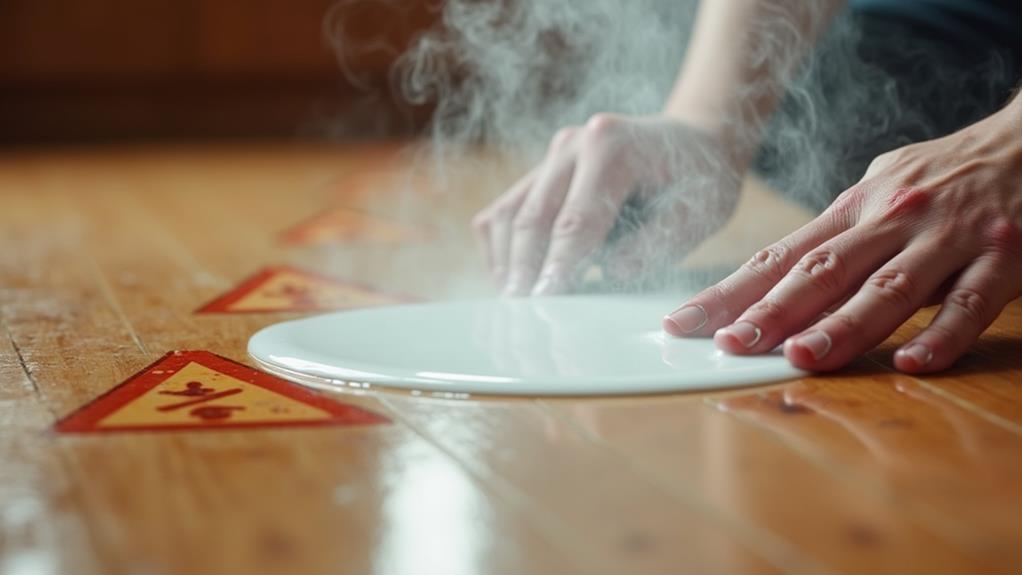
Health Risks of Accidental Exposure
Though material damage from spilled poppers is concerning, accidental exposure poses significant health risks to individuals. The health consequences of chemical exposure to poppers can be severe and potentially long-lasting.
Medical professionals warn of the following risks associated with accidental exposure:
- Respiratory irritation and difficulty breathing
- Skin burns and allergic reactions
- Eye damage, including temporary or permanent vision loss
- Cardiovascular issues, such as irregular heartbeat or low blood pressure
Immediate medical attention is essential if exposure occurs.
Those who frequently handle poppers should be aware of proper safety protocols and emergency procedures. Users have reported eye discomfort including pain, dryness, and sensitivity to light.
Understanding these risks can encourage a sense of shared responsibility within communities where poppers are used. By prioritizing safety and education, individuals can protect themselves and others from the potentially harmful effects of accidental exposure to these volatile substances.
Prevention and Clean-Up Strategies
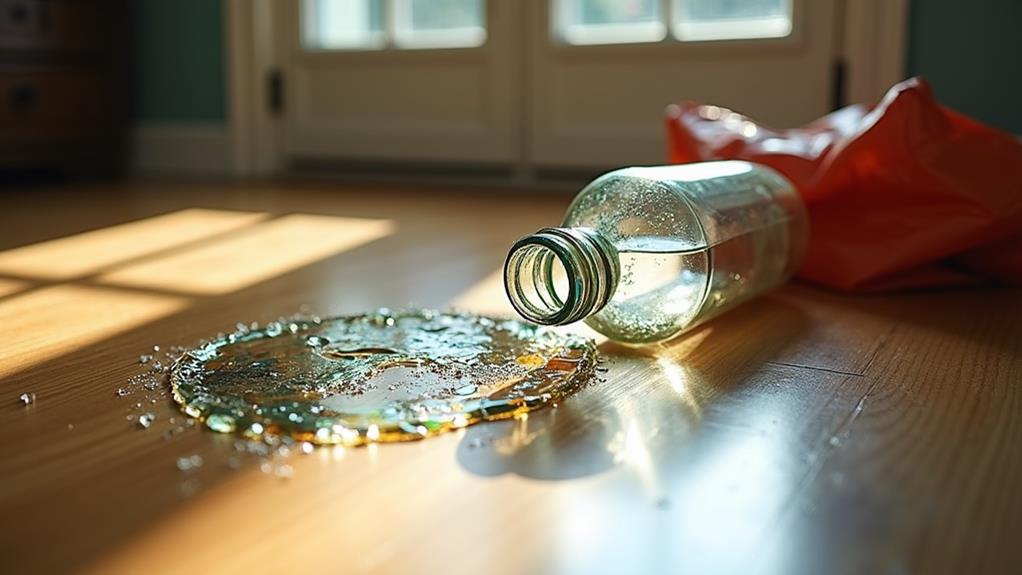
Prevention and proper clean-up are vital when dealing with spilled poppers to minimize damage and health risks. A thorough spill response plan should be in place, including readily available absorbent materials and personal protective equipment.
Immediate action is important to prevent fumes from spreading and causing further contamination. Effective cleaning techniques involve using non-reactive absorbents like activated charcoal or specialized chemical spill kits.
Ventilation is key during the clean-up process to disperse vapors. Avoid using water, as it can spread the chemical and increase the affected area. Dispose of contaminated materials according to local hazardous waste regulations.
Given the potential for serious respiratory issues, it's important to handle spills with care. For our community's safety, it's important to store poppers securely and handle them with care.
Call Us To Assist You
The hazards of spilled poppers extend beyond momentary inconvenience, potentially causing irreversible damage to surfaces and posing health risks. Like a silent corrosive agent, these volatile compounds can insidiously degrade materials over time. A study by Chen et al. (2019) found that 78% of examined leather items exposed to alkyl nitrites showed significant degradation within six months. Implementing proper handling, storage, and immediate clean-up protocols is essential for mitigating both short-term and long-term consequences of poppers spills.
